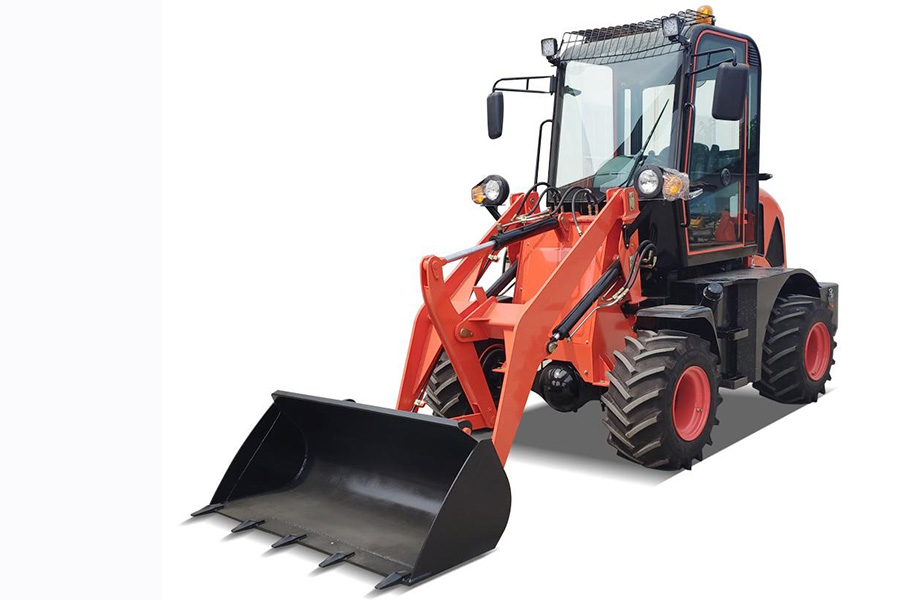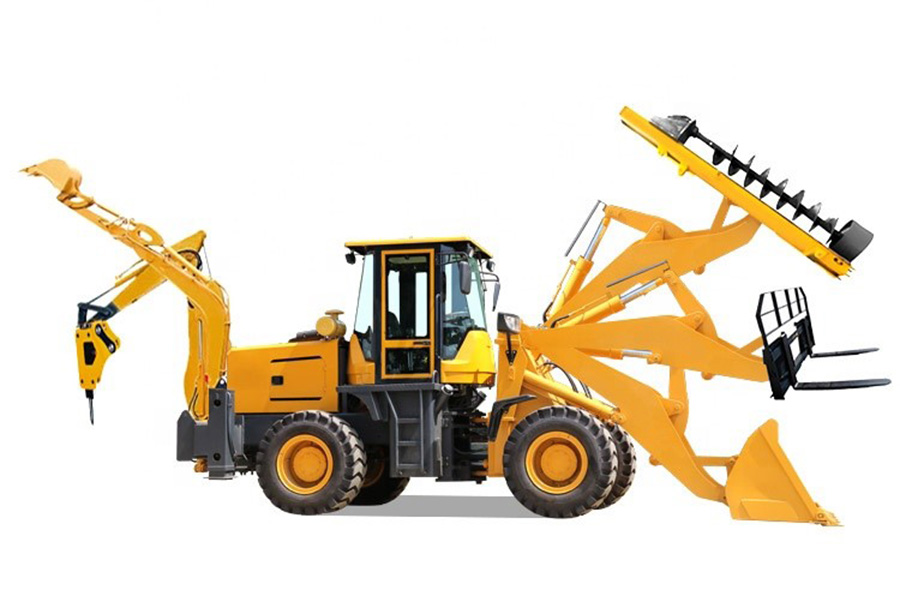Wheel loaders are known for their power on the construction site. They’re instrumental in loading trucks with soil and raw materials for transportation and moving heavy materials to the site. To keep them productive, they need proper and frequent maintenance. Failure to do this may lead to unprecedented breakdowns and lost time that could have been used productively. That is why businesses need to know how to maintain their loaders. This guide will explain how to maintain a loader.
Table of Contents
Why is loader maintenance important?
Structure of a loader
How to maintain a loader
Final thoughts
Why is loader maintenance important?
Resell equipment at a better value: Maintaining a wheel loader will undoubtedly ensure that it’s in its best condition should the business consider reselling it.
Quickly detect problems before they become big: Frequent maintenance handles the minor problems that could arise from the operation and prevents them from escalating into more extensive, costlier repairs.
Improve the safety of operation: Maintenance ensures that it’s safe to operate a wheel loader, thereby reducing the risk of dangerous damages.

Structure of a loader
Engine: It powers the wheel loader and acts as a counterweight to the bucket load of the machine.
Torque converter: It facilitates power transmission from the engine to the gearbox.
Transmission shaft: It allows the transmission to be transferred to the front and rear axles, causing the wheels to rotate.
Boom: It’s connected to the bucket on one end and the machine frame on the other. The hydraulic boom cylinder lets the boom lift the bucket with its load.
Rocker arm: It helps in turning the bucket together with the hydraulic cylinder and the connecting rod.
Bucket: The bucket is used to carry the load and load material onto trucks or dumpers for transportation.
Hydraulic system: The hydraulic system is used to convert mechanical energy from the engine into hydraulic energy in the oil pump. The hydraulic energy is then transferred in the cylinder and oil motor and converted back into mechanical energy.

How to maintain a loader
Conduct visual check
The work that wheel loaders do will make them wear and tear very quickly. Because of this, machine operators should conduct visual checks on the machine to ensure all parts and attachments of the loader are working. Attachments such as buckets and pallet forks experience a lot of strain and may require replacing or repair. Therefore, operators should check for missing, loose, or cracked teeth during the inspections. Other components to receive attention are hoses and tilt and lift cylinders that may be worn down or damaged. The wear plates bolted on cutting edges and attachment pins should be in good condition and fit appropriately in their attachments.
Check fire treads and inflation
Tires are essential to a wheel loader and need to be inspected every day before the operation to prevent loss of time. Machine operators should look at the tires and look for detectable missing chunks of tire tread, probably lost due to the rough terrain. The bead line and the rim should be intact before operating the wheel loader. In addition to this, the operator should know the exact amount of tire pressure in psi to be inflated. Such information can be obtained from the wheel loader’s manual. Wheels weighing 25 pounds or less should have a tie pressure of between 60 psi to 85 psi.
Check the driving and parking brakes
The driving and parking brakes of the wheel loader need to be in good condition every day before the operation. The construction site may be congested and crammed with other equipment. The need to stop quickly is almost always essential, so operators should make sure that all brakes are in working condition.
Clean driveline seals and axles
When the wheel loader works in wet conditions, it risks creating material buildup along the driveline. Material build-up could prevent other problems requiring repair from being detected. This is why the driveline should be kept clean to identify axle and seal leaks in good time.
Check fluids, oils, and filters
Engine oils and coolants need to be closely monitored daily to prevent unprecedented breakdowns that lead to downtime. The use of dipsticks and sight glasses will help operators ensure that the appropriate fluid level is maintained for optimum operations. Besides this, the use of non-OEM filters is discouraged. Instead of this, the loader’s performance should be carefully monitored against recommended maintenance intervals to achieve the best filtration processes. Operators should also be aware of wheel loaders that come with engine-after treatment systems that treat exhaust fumes to meet EPA’s emission standards for tier 4 engines and follow their instructions accordingly.
For example, all engines using the CEGR engine with a diesel oxidant catalyst (DOC) and a diesel particulate filter (DPF) must use American Petroleum Institute (API) rated CJ-4 oil, otherwise known as low ash oil that reduces particulate matter in the filter.
Maintain wheel loader’s cooling system
Owing to the dust that some of the construction sites produce, it may be recommended that a reversible fan be installed to help clean the cooling system. In addition to this, engine pre-cleaners can be used to protect the engine’s cooling system.
Check engine status
The engine’s status refers to how each component of the engine is before operation. The following components should be inspected daily for leaks, damage, or wear.
- Hydraulic oil filter
- V-bet integrity and tension
- Air intake hoses and connections
- Turbo and exhaust manifold
- Heat exchanger fins
- Radiator and fuel cap
- Fuel cooler
- Fan enclosure, blades, and motor
Final thoughts
Wheel loaders will remain one of the essential types of equipment on the construction site. Their sheer power and productivity are unmatched. The sole purpose of this guide was to look at how to maintain wheel loaders and why their maintenance is essential so that the wheel loader can function at an optimum level. For more information on acquiring wheel loaders, visit Chovm.com.





 বাংলা
বাংলা Nederlands
Nederlands English
English Français
Français Deutsch
Deutsch हिन्दी
हिन्दी Bahasa Indonesia
Bahasa Indonesia Italiano
Italiano 日本語
日本語 한국어
한국어 Bahasa Melayu
Bahasa Melayu മലയാളം
മലയാളം پښتو
پښتو فارسی
فارسی Polski
Polski Português
Português Русский
Русский Español
Español Kiswahili
Kiswahili ไทย
ไทย Türkçe
Türkçe اردو
اردو Tiếng Việt
Tiếng Việt isiXhosa
isiXhosa Zulu
Zulu